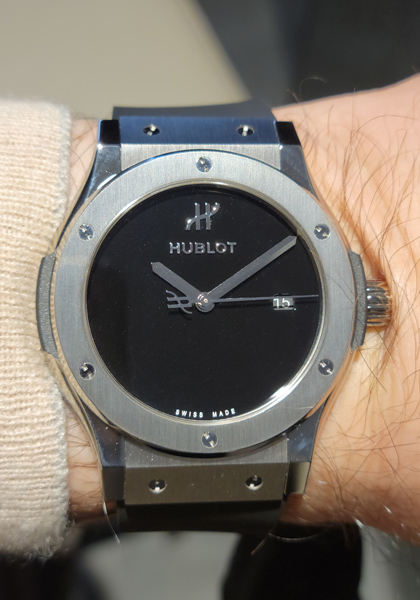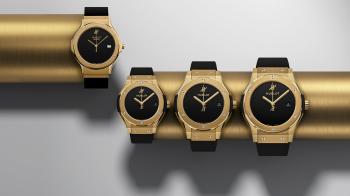It's a trivial thing really. Re-editions are as natural to watchmaking as breathing is to us. But when it concerns a founding timepiece, one that represents a pivot in history at that, we just have to shine a light on it. The Classic Fusion Original is such a piece. Its importance cannot be stated loud enough.
The very first Hublot fit into a very special point in time. The 1980 are an abyss of watchmaking. Cheap and ugly quartz movements reigned supreme. It was the Ragnarok of the watch gods : some of the brands we worship today were in shambles. They used awful tricks such as 12 micron yellow gold plating, and not even on case backs. Hands as thin as hexes hair. Roman numerals without substance or heft. Bezels that seemed to apologize for even being there. Weird shapes. Neon colors that became irrelevant lightning fast. And the list goes on.

In that vast ocean of mediocrity, all alone and on his own, Mr. Carlo Crocco had a bright idea, one with a future. Hublot (Porthole in French). A yellow gold, 36 mm timepiece with features far outside the era's norm. It had a sleek, black, shiny, clean dial. A rounded bezel with 12 studs looking like the screws fastening a porthole shut (hence the pun). Just underneath it, a pair of outgrowths, shaped like handles to the same window, which the brand calls ears. And lastly, it was mounted on a black, sleek rubber strap. This kind of strap was the norm for the dime-a-dozen watches the Japanese exported worldwide by the container full. Or a Swatch. But that Hublot was very expensive, almost as much as a Rolex, with a side of cool and a St Tropez vibe. It had all the ingredients of a revolution.
But Hublot didn't revolutionize watches just then, because it was pretty much alone in the dark. The 80's weren't in a position to see, much less welcome, any revolution or deep style upheaval. So they didn't offer Hublot a massive platform for success, just several years of success. The brand quickly created steel versions, a chrono, a diver, but very few iterations and hardly any restyling over the course of nearly 20 years. It had its defects, chief among them a rubber strap that shed like it had forgotten to put sunblock on. It slowly dwindled until, in 2004, a visionary entrepreneur called Jean-Claude Biver acquired it, resuscitated it and eventually, transmuted it.
He relied on Hublot's core principle : a sports luxury watch, where a non-precious metal, attached to a strap that's even less noble, achieves actual exclusivity. Hublot turned the codes of an era on their head yet again. This second occurrence bore the name of the primordial one : Big Bang.
Since then, Hublot has kept evolving, altering its design grammar ever so slowly away from the original Big Bang, and in all directions. Its toned-down, understated version is called Classic Fusion and at the top of this understatement we now find the Classic Fusion Original.

Of course, it's a Hublot, so it exists from the get-go as a range in and of itself : three materials available in three sizes, enough to make everyone happy. Of course, it's a contemporary watch so it has an automatic movement, a strap whose rubber is vastly superior to the original, and a black on black date disc. Of course, it includes contemporary Hublot design details, such as the logo-shaped counterweight on the seconds hand. And obviously, it's slightly chubbier than the original and very well finished.
And still, the Classic Fusion Original retains the little extra something that had made the original Hublot so special. Lean features, yet full of details. A jet black, very sleek and well executed dial. And that case, with a full lug space, which could have been called integrated if it had been integrated with a bracelet. The way the various planes shift from one to the next is a unique design signature. The ears have become black, the logo's gotten bigger but, however classic the method of this re-edition, it has managed to preserve what matters most : the original spark.







